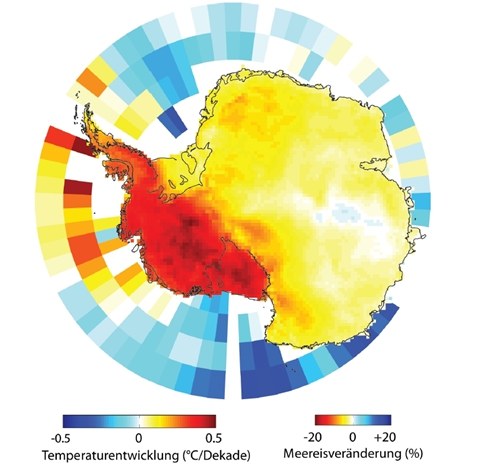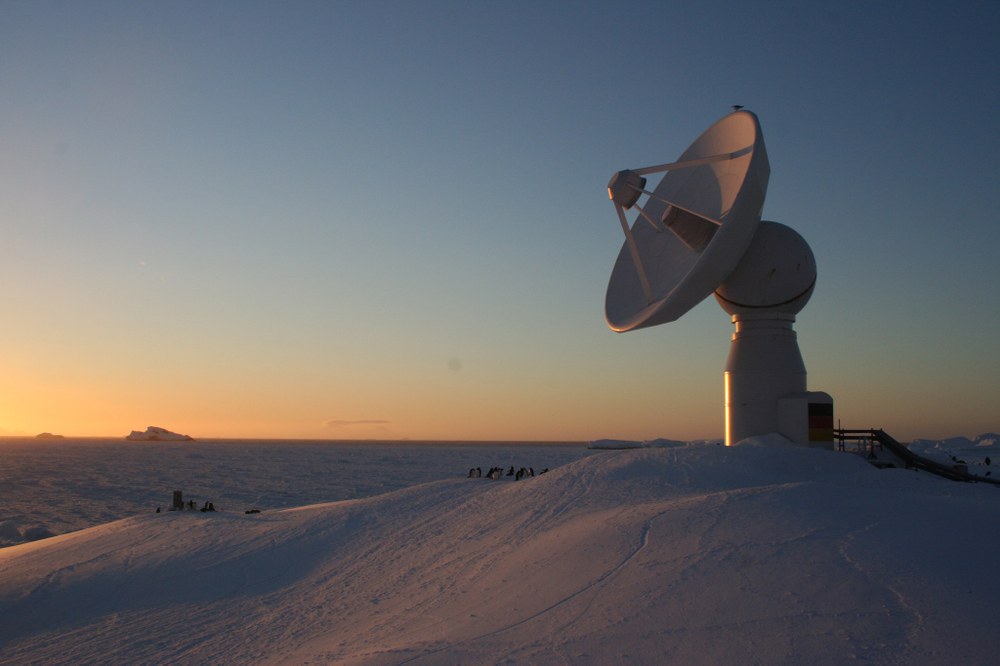New “Antarctic” Junior Scientists group at DFD

from Steig et al., Nature 457, 2009
The polar regions – particularly the Antarctic – play an exceptional role in global climate With their vast, white, ice and snow covered areas they decisively influence Earth’s radiation balance, and accordingly its energy balance. At the same time they uniquely react to changes in global climate. Now DFD has decided to investigate this timely topic by establishing a junior scientists group for the purpose.
The group plans to accomplish systematic, wide coverage, and long-time-span accounting of ongoing processes triggering climate change above the Antarctic Peninsula, with investigations ranging from ice cover to surface temperature to the mesosphere. The long term goal is to constantly monitor the Antarctic ice cover (both ocean and inland ice) and the atmosphere above the Antarctic Peninsula. The group is especially interested in better understanding the climate-relevant interrelationships among the Antarctic Ocean, Antarctic sea ice, the continental ice sheet and atmospheric circulation patterns, as well as the underlying mechanisms and processes. Time series of remote sensing data available from the DFD satellite data archive and extending in some cases to twenty years in the past will be analyzed. Numerous studies of such ongoing processes leading to change over the Antarctic Peninsula have been undertaken in the past, but they have so far been limited to individual regions or relatively short time intervals.
The group’s research will benefit from the long presence of DFD in the Antarctic. Since 1991 DFD has been acquiring high resolution radar data at DLR’s GARS O’Higgins Antarctic receiving station on the Antarctic Peninsula. Such data is ideal for investigating changes in ice cover. Especially data from the European ERS radar mission and DLR’s TerraSAR-X and TanDEM-X missions will provide valuable input. For the future, there are plans to convert raw satellite radar data into near-real-time information products right at this Antarctic station.
The group of emerging scientists will address three main thematic topics:
- Derivation of glaciological parameters from ERS data, which involves complete reprocessing of the ERS data inventory from 1991 to 2011
- Investigating the temperature situation above the Antarctic Peninsula from the surface to the mesosphere with the help of remote sensing data collected by satellites.
- Developing a near-real-time service to support sea ice and iceberg monitoring at the Antarctic Peninsula in close cooperation with EOC’s Maritime Safety Research Department in Bremen and Neustrelitz. Data reception, processing and product delivery are to take place at the DLR O’Higgins Station.
The dissertations produced by the junior scientists in this group will be supervised by the geography departments at Augsburg University and Erlangen University. The junior scientists group will be initially financed for three years by DLR’s Space Division. The group will be led by DFD scientist Dr. Kathrin Höppner and will also assume teaching obligations at Augsburg University’s Institute of Geography.



